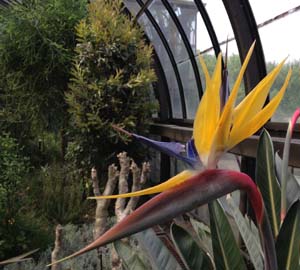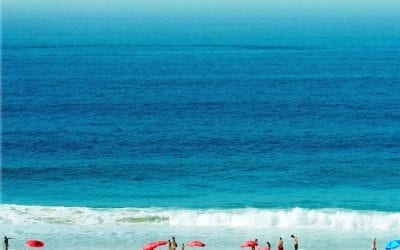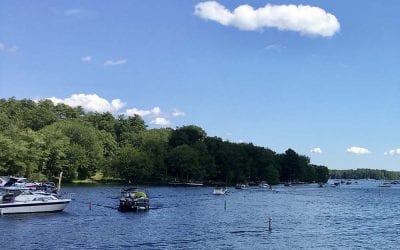
This is excerpted from InternationalLiving.com. Click through to the full story.
When you ask folks who live on an island what drew them to life on a curio of clay, they tend to respond by saying things like, “I can live simply without much interference.” Or “Here I’m part of a community that’s like a big small town.”
Or they simply look at you in flip-flop-clad incredulity and ask, “Have you seen my view?”
Islands are places where the stars shine bright at night. Out in the ocean, a profound quiet exists (no traffic jams, hassled commuters, sirens). And because not everything is always so easy to get on an island, one tends to care less about “getting” at all. Life really does become simpler.
That stretch of water that separates an island from the mainland is nature’s moat. It keeps these places special…apart. Maybe that’s why so many islands seem to attract artists and writers…
For all the common fundamental appeal, though, islands come in many shapes and sizes. Some are of the sandy variety, where hammocks hang low between palms and you can dive out on a nearby coral reef. Others are of the wild Atlantic sort, where green-topped cliffs overlook a swelling sea.
Here we’ve hand-picked seven islands, scattered around the globe. All are locales where, expats report, you can find privacy, peace, a simpler way of life, and strong communities.
Roatan, Honduras: Quintessential Caribbean and Rolling Hills
By Jennifer Stevens
Long a sleepy emerald escape in the western Caribbean, Roatan has quietly graduated from secret divers’ getaway to livable island haven. Just 50 square miles, this dollop of sand off Honduras’ northern coast is long and skinny, fringed by a reef rich with sea life and garnished by white sand beaches.
Though more than half a million cruise ship passengers are expected to land on Roatan this year, save for the days they invade, the beaches remain quiet and pristine. Life is laid back, lived in rhythm with the sun and the surf. No big-name resorts. No “spring break” strips. No high-rise developments. This is old-school Caribbean…though fitted out with modern conveniences…
Here, 35 miles off the coast of northern Honduras, English is widely spoken. That, along with an established expat community, makes it a relatively easy place to settle in. “A trip to the supermarket is a social occasion,” says Moskowitz. “It’s like small town America in the 1930s.”
Life on an island is often more expensive than mainland living — almost everything has to be imported, after all. But relative to the rest of the Caribbean, Roatan offers excellent value.
Expats report that a couple can live comfortably (with the occasional dinner out and with a housekeeper to tidy up once a week) for $3,000 to $4,000 a month, rent included. (You’ll want to budget anywhere from $600 a month for rent on a one- or two-bedroom apartment near the beach to $1,000 or more for a house.)
Bottom line: Roatan is great for good value, laid-back living in the sun. Culture vultures will get bored. But if you like to dive, snorkel, swing in a hammock or sit with your feet in the sand, you’ll want to linger.
Koh Lanta, Thailand: Wild Jungles and Uncrowded Beaches
By Jason Gaspero
Imagine waking up, walking out your front door, and gazing at towering green mountains cloaked in super-dense, dark-green virgin rainforest. Your “backyard” teems with exotic wildlife.
Drive just several minutes from home and you find some of the world’s most spectacular beaches. Beaches that — somehow — stay remarkably uncrowded.
You also have world-class diving, fishing, swimming, and snorkeling. Spend the day catching a 50-pound saltwater barracuda, grill it on your barbeque, and eat it for dinner with friends just a few hours later. Go diving with 45-foot whale sharks, the largest fish in the world. Swim in the aquamarine-colored seas, which stay at a near-perfect 84 F year-round. And to top it off, enjoy attractive real estate opportunities.
I’m talking about the island of Koh Lanta, in southern Thailand. Located in the Andaman Sea about 37 miles south of Krabi Town, laid-back Koh Lanta has somehow avoided the mass commercialization that’s hit other expat havens in Thailand.
Make no mistake. This is no Phuket, Phi Phi, or Samui. Come to Koh Lanta and you won’t encounter masses of drunken backpackers, see any McDonalds or Pizza Huts.
Here, it’s all about a casual lifestyle: chilling on the beach, trekking in the jungle, dining on world-class cuisine (or cooking your own), and relaxing with friends.
Most of the expats in Koh Lanta’s sizable expat community come from Sweden, the UK, and France and already speak English well.
Head to Koh Lanta’s main town and you’ll find just about any modern amenity you want. There’s a modern hospital, English-speaking doctors and dentists, a gym, a driving range, a home-improvement store, a laundry delivery service, computer repair and mobile phone shops, and many more amenities.
Koh Lanta’s many restaurants offer plenty of choice for cheap and tasty cooking. Try some superb local Thai cuisine at Kwan’s Cookery in Klong Khong beach, or some out-of-this-world Pad Thai at Phad Thai Rock ‘n’ Roll in secluded Kantiang Bay. If you feel like eating at home, you can shop for groceries at Koh Lanta’s bustling, astoundingly cheap outdoor market.
Here you can easily buy enough fresh seafood, meat, fruit, vegetables, herbs, spices, and sauces to feed four people or more for dinner for under $10. Koh Lanta’s “Lanta Mart” offers imported groceries at fairly reasonable prices.
And if you need a fix of modern city living? No problem. Just take the ferry to the bustling international hot-spot of Phuket. It’s just a few hours away. (Make sure to bring your camera. The ride there and back on the ferry is gorgeous.)
Caye Caulker, Belize: Life is all About the Water
By Glynna Prentice
Here, life is all about the water. You can see the Caribbean from almost every place on the island, the sun glinting off the waves. Walk barefoot on the white-sand beaches, the sand squishing between your toes. Paddle off the Split, the channel separating the north and south halves of the island, enjoying a cold one at the Lazy Lizard between swims. And, in the evening, tuck into a fresh-fish or rock-lobster dinner at island restaurants like Habaneros or Rose’s Bar & Grill.
Boats rock at anchor all around the island, and they get regular use. The blue Caribbean waters just beg to be sailed…and the Chinchorro Reef, the second-largest barrier reef in the world, sits just a mile offshore. For $25 you can spend the morning snorkeling along the reef with an experienced guide, floating above gnarled coral formations and gliding past sea vegetation that waves gently in the current.
With its laid-back style, Caye Caulker gets its share of young, active tourists. But it appeals to older expats, too. They come for its simple lifestyle, stunning views, and for still-affordable seaside real estate. Prices on Caye Caulker are rising fast, especially on the already-developed southern half. But there are still bargains to be found. What about a small one-bedroom, one-bath condo with a rooftop terrace and sunset views for $150,000? There’s one for sale now. Looking for a business? A lot with four cabanas, used for vacation rentals, is on offer for just under $190,000.
Corn Islands: Nicaragua’s English-Speaking Caribbean
By Suzan Haskins
White sands with gently swaying palms…impossibly blue waters…a healthy reef for scuba diving, snorkeling, fishing, and lobstering…Friendly locals who speak English as their official language. And very few tourists.
That’s what you’ll find (or won’t find) on these two little dots of paradise just 50 miles off Nicaragua’s Caribbean coast. Big Corn—about four square miles in size and with maybe 6,000 inhabitants—is just 10 miles (or a wild 30-minute boat ride) from Little Corn, one-fourth the size of Big Corn in both land mass and population.
No one is quite sure how they came to be called the “Corn Islands.”
Some say pirates and British buccaneers, who came here to restock supplies during the 17th and 18th centuries, misspelled the Spanish word for meat, carne. Others say the islands are named for the corn those swashbucklers found growing here.
It may actually be more apt to call these the “Lobster Islands,” since lobstering is the main industry. As one of only a handful of expats living on Big Corn told me, “We eat lobster with eggs for breakfast, we have lobster with pasta, with rice, with fruit…We experiment with lobster in just about every dish you can imagine.”
There are hotels and guesthouses, but beyond that, you won’t find souvenir shops or many tourist businesses at all. Not even coffee shops or Internet cafés. (And Internet won’t be what you are used to at home.)
On Little Corn, there are no roads, just a three-foot-wide sandy walkway…so no vehicles allowed—although a new upscale eco-resort is in the works.
Waiheke Island, New Zealand: Art, Vineyards and Food
By Steenie Harvey
Combining unspoiled beauty with sophistication, New Zealand’s Waiheke Island is one of those charmed places blessed with everything, including a sub-tropical micro-climate. Although the island is only a 35-minute ferry ride from Auckland, New Zealand’s largest city, its sheltered position in Hauraki Gulf delivers far more sunshine and much less rain.
The climate is perfect for small producers. Along with wines and olive oils, gastronomic treasures include oysters, chutneys, sheep’s milk yogurt and honey. Locally-produced brioche and pastries can match those you’d find in French boulangeries. If you’re here in November, you won’t want to miss the Olive & Artisan Food Festival.
Twelve miles long, Waiheke is home to around 8,000 permanent residents, including a fair sprinkling of artists, sculptors, and writers. But it’s also a beach-and-water-sport vacation island, and there’s a large number of baches (Kiwi holiday homes). The population can swell to over 30,000 in summer.
Ferries dock at Matiata Bay, on the west of the island. Buses go from here to Oneroa, its main settlement. With lots of craft outlets, art galleries, places to eat and drink, a theater/cinema, and essential services, the village looks down on a white beach with views of the Coromandel Peninsula in the distance.
Along the north coast, picturesque coves and inlets include Little Oneroa and Palm Beach. With a long sandy beach perfect for watersports, and a good choice of cafés and restaurants, Onetangi village is a popular vacation spot, especially for surfers and sea kayakers. Once a year, its two miles of firm white sand become Waiheke’s race course, with horse racing up and down the beach. On the south of the island, Surfdale village is a favorite with windsurfers.
Inland, lush valleys are the setting for rural retreats and around 30 wineries, a number of which have restaurants. Although New Zealand is often associated with Sauvignons and Chardonnays, Waiheke is noted for its Bordeaux-style reds.
Langkawi, Malaysia: Nature on 99 Islands
By Frances Wilks
“It’s a very active, outdoor lifestyle,” says Chad Withers, a San Franciscan who has lived here for the past five years. “I can hike up to the Seven Waterfalls in the morning, sail to an uninhabited island in the afternoon, and eat dinner in a five-star restaurant or a simple hawker’s stall.” The price for a five-star meal runs around $50 a head, and only $2 or $3 at the hawker’s stall.
Langkawi, which lies in the turquoise waters of the Andaman Sea, is actually an archipelago of 99 islands, but almost everybody lives on the main island. Designated a Global Geopark by UNESCO, it has diverse and fascinating flora and fauna. The expat community is international, with expats from the U.S., U.K., Australia, and South Africa. Many of them are seasoned expats, retirees who’ve worked all over the world and who now want the thrill of a Robinson Crusoe-style island with modern comforts.
Aran Islands, Ireland: History and Romance on the Wild Atlantic Shore
By Eoin Bassett
houses on the Aran Islands credit Nazareen HeazleOn a good day the Aran Islands are among the most beautiful and dramatic places in the world. Sunlight kindles vivid greens in the patchwork of fields and casts a spell on the swelling Atlantic. Sitting on the warm stone ramparts of a pre-historic fort you can gaze out over soaring cliffs toward the ocean, or look back on the dry-stone walls that crisscross the land. Like beads on a necklace in the sea, the three islands of Inismor, Inismaan and Inisheer get more good days than you might think.
Despite being nestled in Galway Bay off the west coast of Ireland, the islands are actually the most temperate spot in Britain and Ireland and have the longest growing season. You’ll often see clouds pass over on their way to the mainland smug in the knowledge that you will stay dry. And even bad weather here has its attractions.
What better excuse to sit fireside in the local pub and sip on a Guinness while musicians play?
The islands are among the last true bastions of Gaelic Irish culture and tradition. Each year thousands of students come here to brush up on their native language, and if you want to speak the old tongue of the Celts, this is the best place to learn. The locals all speak it—along with English as a fluent second language.
Despite thousands of summer tourists the islands retain their character—each different from the other. The annual festivals of Inismaan are not those of Inismor for instance, and likewise even the flora and fauna is different on each. “Inis” means island and “mor” means “big.” And the largest island, Inismor, is exactly that. At about 12 square miles it has a population of around 1,000, most of whom live near the main village of Kilronan where you’ll find bars, restaurants and a medium-sized convenience store. Joe Watty’s bar serves up meals of fresh lobster, crab, mussels and fish and there are vegetarian offerings, too. It’s also the main location for live music, although you’ll find music—especially traditional—in other places as well.
Adventurous folks, artists, painters, writers, and those trying to do something different, have long been attracted—and—accepted here. Good broadband Internet on the islands makes them an ideal base if you have a portable career. And the locals are keen for new blood to help bolster the population as young people leave in search of work.
See here for a slideshow of images of these 7 islands.
Editor’s Note: Find out more about tropical destinations around the world—where you can be by the beach, enjoy perfect weather, sip cocktails while swinging in your hammock, and generally lead a laid-back and stress-free lifestyle. Sign up for IL’s free daily postcards and we’ll also send you a FREE REPORT: The World’s Best Island, Beach and Tropical Retirement Destinations.



